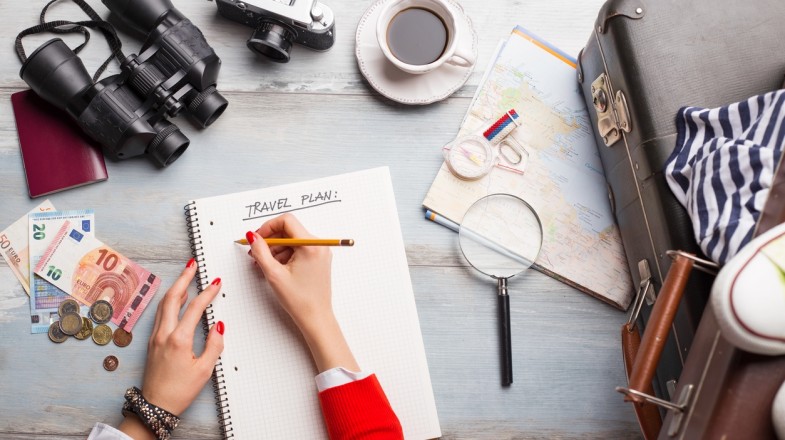9 Secrets to Planning a Trip for the Art Lover
Introduction
Art lovers, your next trip should be an art trip! It doesn’t matter what kind of art you like or where in the world you want to go: whether it’s classical European paintings or modern American sculpture, there are museums and galleries everywhere. I often find myself planning my trips based on things that are not very relaxing, like visiting famous landmarks and doing touristy things. But if you’re looking for a way to truly relax on your next trip – whether it’s across the ocean or around town – then consider the following tips for planning an art-loving journey that can help you get from point A to point B while still enjoying some of life’s best things: food and wine included (but not limited to).
1. Start with a sanctuary.
- Start with a sanctuary. A sanctuary is more than just a place where you can get away from it all; it’s a place where you can truly be yourself. Whether it’s the sound of waves crashing against rocks, or the smell of fresh flowers in bloom, every sanctuary has its own identity and personality that will help define your trip to come.
- Find out if there are any major events happening at your chosen destination during the time you’ll be there. If so, make sure to plan around them! You don’t want to miss out on anything important while on vacation!
2. Bring your own art supplies.
- Bring a sketchbook and pencils. This is especially important for the artist who plans on drawing, but it can also be great for anyone who wants to capture the moment with their camera.
- Bring a camera and sketches. If you’re not an artist, don’t worry–you can still bring your own art supplies! A camera will allow you take pictures of all the beautiful places you visit while also giving you something fun to do while waiting in line at museums or sitting on trains/buses/planes (or even cars).
3. Make time for museums on the road.
If you’re the kind of person who loves art, museums are a must. But how do you find one?
There are many factors to consider when choosing a museum: location, price and opening hours are all important considerations. If possible, it’s best to research which museums offer free admission or discounts for students and seniors before booking your trip. And if there’s anything else that might impact your decision-making process (like whether or not kids are allowed), make sure those details are clear as well!
4. Go to the one-of-a-kind destinations.
- Don’t forget to check out the unique museums, galleries and other attractions.
- Don’t just go to the big cities, look for smaller towns or villages that have an interesting arts scene.
- You might be surprised by what you find!
5. Look for hidden gems in cities you pass through on your way to somewhere else.
You might be surprised to find that the city you’re passing through on your way to somewhere else has a thriving art scene. Look for galleries and museums in towns where you pass through, as well as shops that sell local artists’ work.
There are also plenty of opportunities to find public art in unexpected places–like airports, train stations and even cafes and restaurants.
6. Be prepared to eat outside of your comfort zone, but don’t go overboard with travel food kits and snacks unless you have a very specific reason for doing so (like dietary restrictions).
Eating is one of the best parts of traveling. You’ll want to try new foods and flavors, but it’s also important not to get carried away with your appetite. If you’re going somewhere where there will be plenty of restaurants, don’t overpack food that can last for days. You may think this sounds like a good idea at first, but chances are that by day three or four all those granola bars will start tasting like cardboard (and you’ll end up throwing them away).
Instead of bringing snacks from home, ask locals what their favorite places are for food–they’ll know which ones serve authentic cuisine at reasonable prices! And if there aren’t any recommendations available online beforehand (or if those reviews seem questionable), just go into each place blind–you never know what kind of hidden gems might pop up unexpectedly!
7. Sometimes art is appreciated best when it’s not pristine, so be careful not to fall into the trap of seeing only perfect pieces when going on an art trip (there are probably some off-the-beaten path galleries or museums that can provide a more authentic experience).
- Sometimes art is appreciated best when it’s not pristine, so be careful not to fall into the trap of seeing only perfect pieces when going on an art trip (there are probably some off-the-beaten path galleries or museums that can provide a more authentic experience).
If you’re looking for a new experience, don’t be afraid to visit art museums that aren’t well known. Many cities have small, local museums that are often overlooked by tourists but offer some of the most interesting exhibits; they also tend to have lower admission fees and shorter lines!
Don’t forget about eating well and staying healthy while enjoying art!
As you plan your trip, don’t forget to think about eating well and staying healthy. Art museums can be huge, so it’s easy to get caught up in the excitement of seeing all of the artworks that are on display. The last thing you want is for a lack of energy or hunger pangs to ruin your experience!
Here are some tips for keeping yourself energized throughout the day:
- Eat a healthy breakfast before heading out so that you don’t feel hungry during the first few hours of visiting museums (or even later).
- Pack snacks such as granola bars or nuts in case hunger strikes while touring an exhibit hall filled with beautiful paintings–you definitely don’t want to miss out on taking photos because your stomach was growling too loudly!
- Avoid fast food restaurants when traveling abroad; these places tend not only offer unhealthy options but also aren’t always easy on the wallet either–and we all know how expensive international travel can be!
- Drink lots of water throughout each day; this prevents dehydration which can lead towards nausea/dizziness among other symptoms depending upon how severe they become over time (which could potentially ruin one’s trip altogether). It also helps keep hunger pangs at bay since hydration makes us feel fuller faster when consumed alongside meals instead than by itself without anything else being eaten beforehand.”
Conclusion
We hope these tips and tricks will help you plan your next art trip! Whether you’re looking for a quick weekend getaway or planning a longer journey across the country, there are so many ways to enjoy art and culture along the way. If you have any questions about our process or want more information on how we can help with your next project, don’t hesitate reach out at [email protected]


